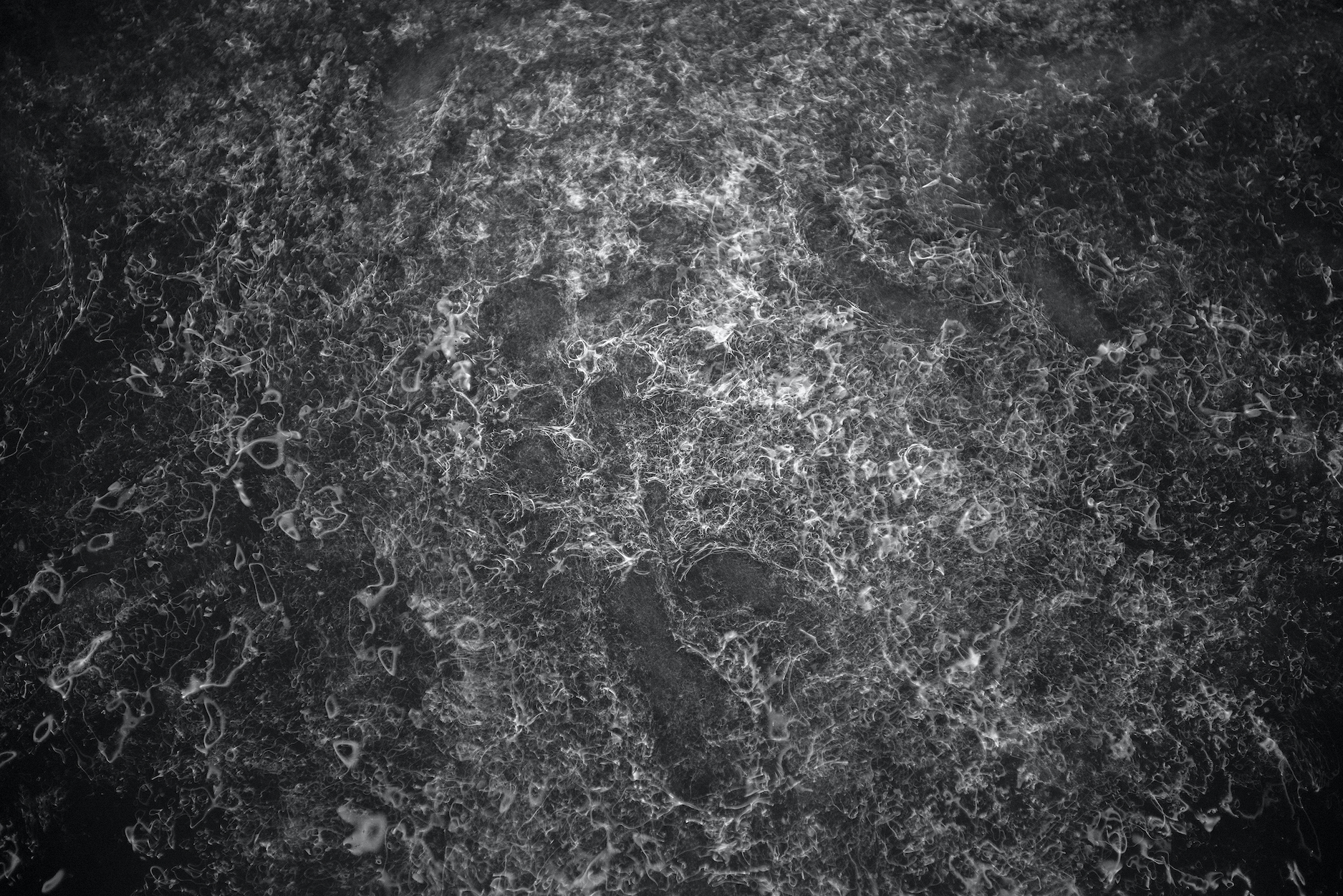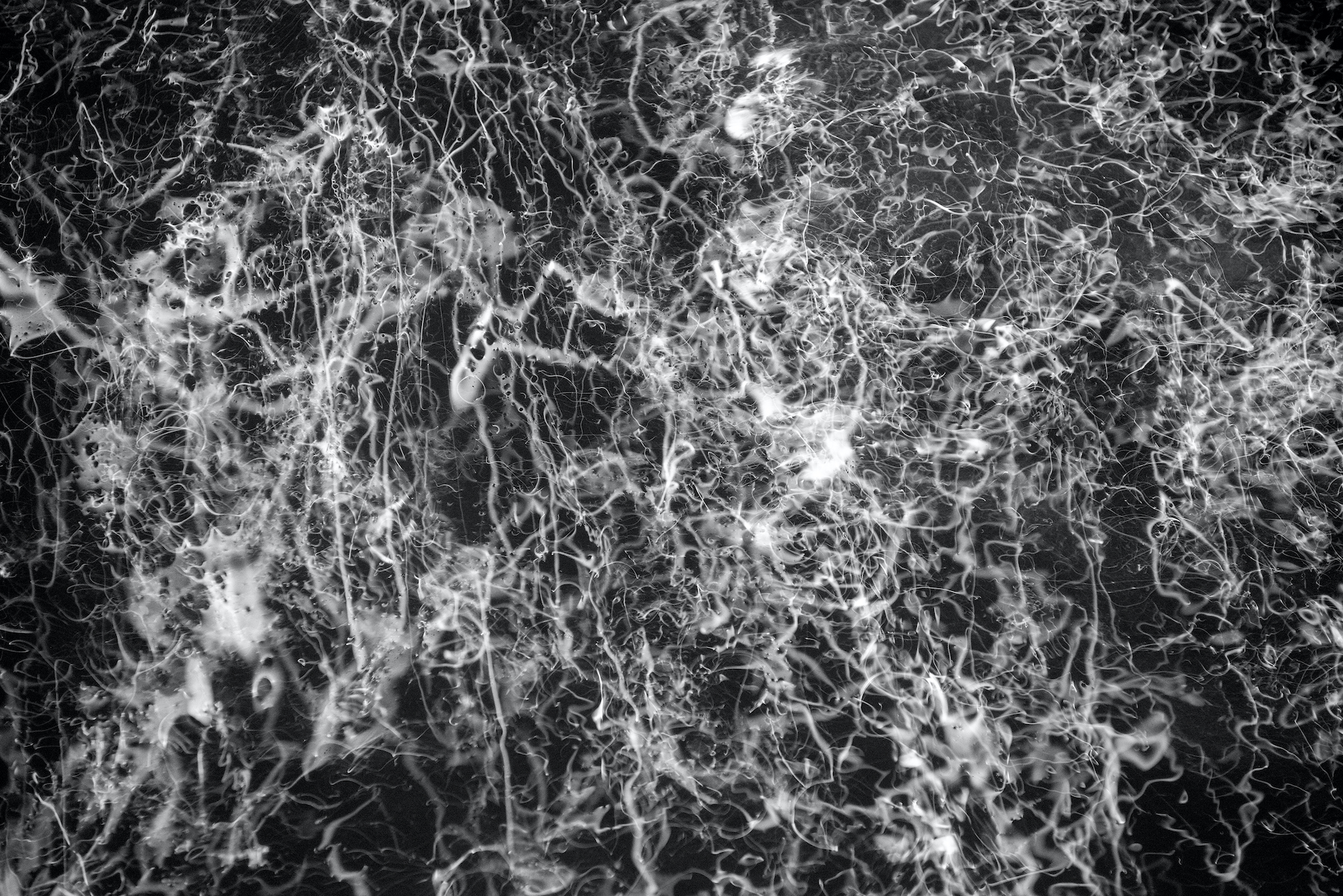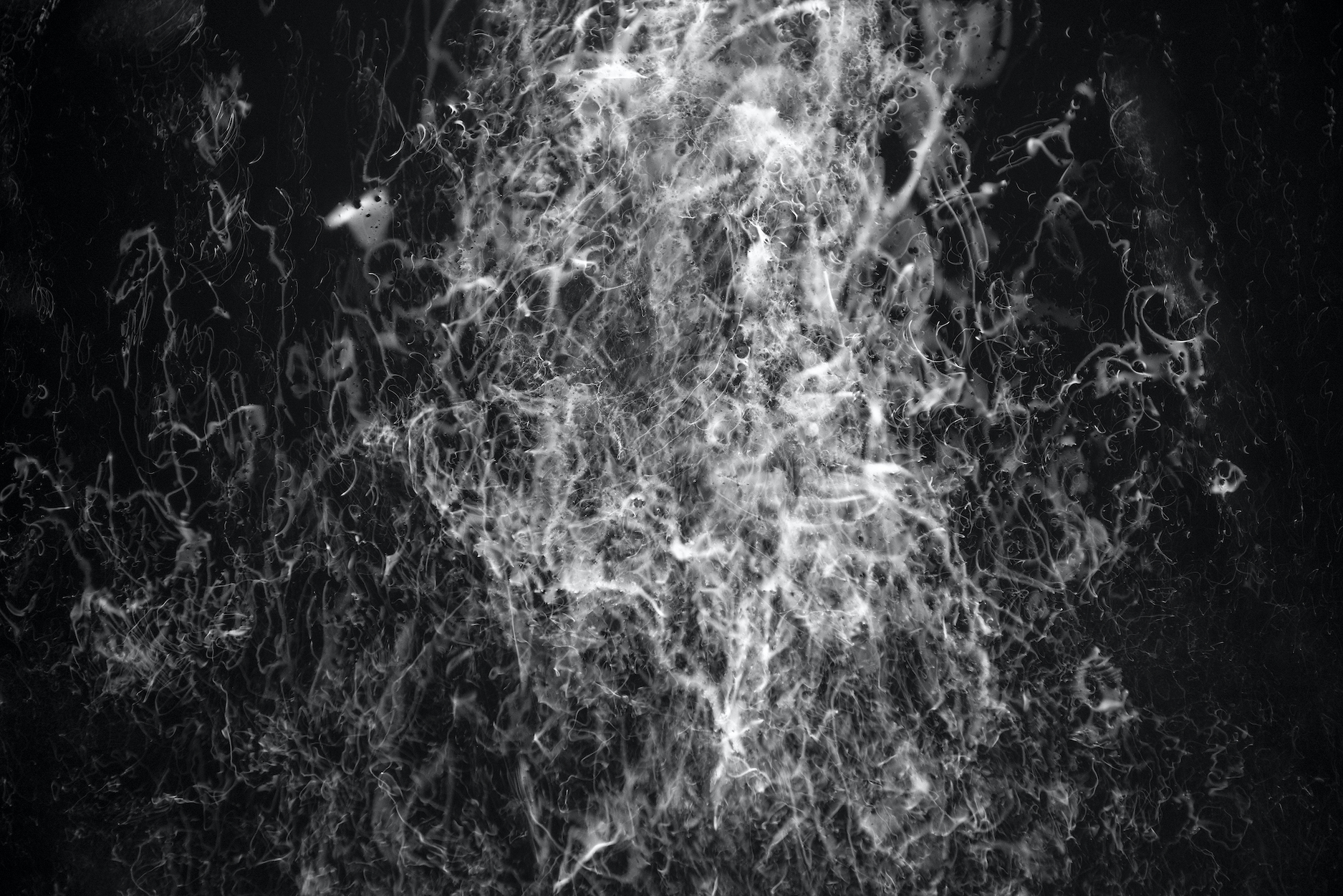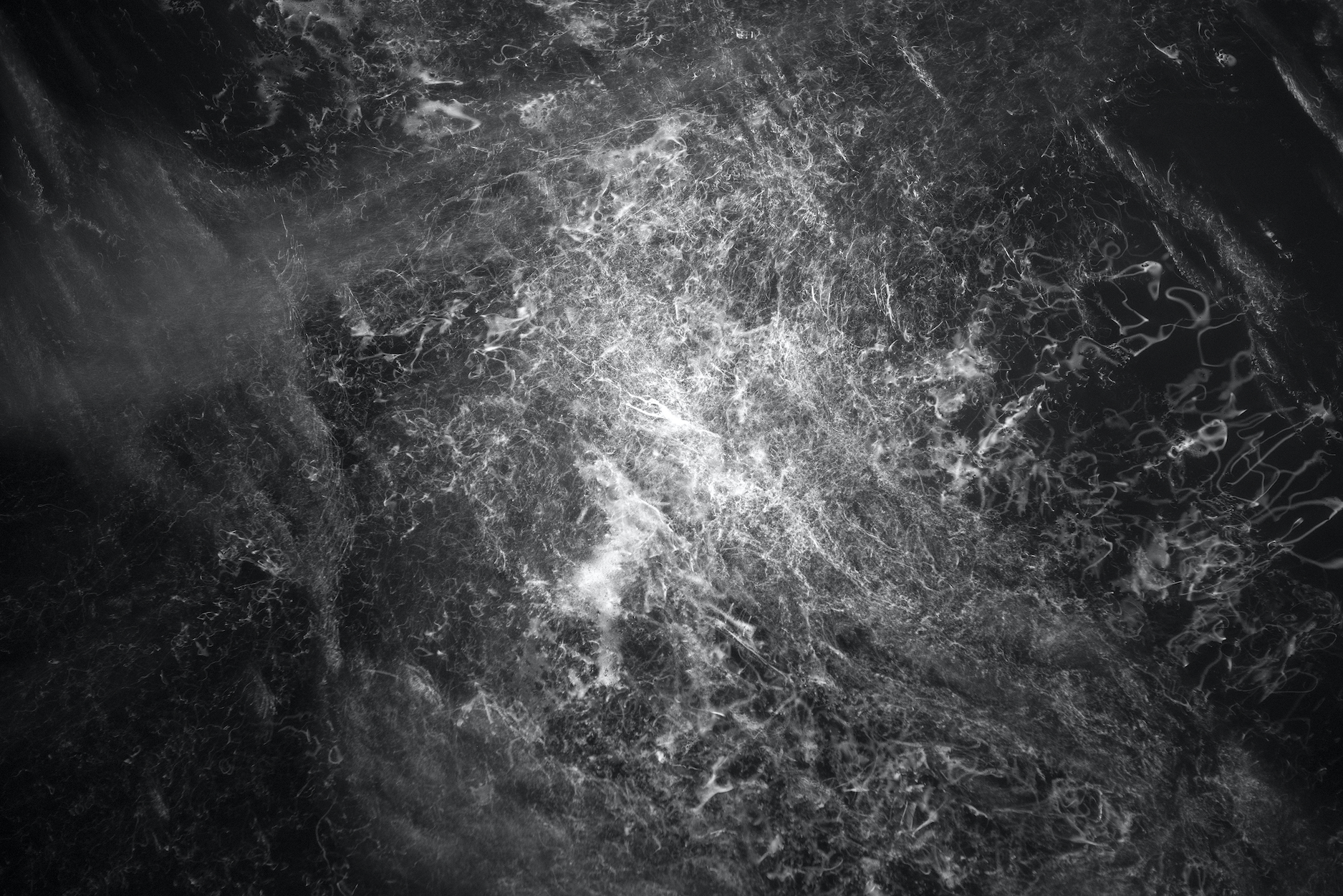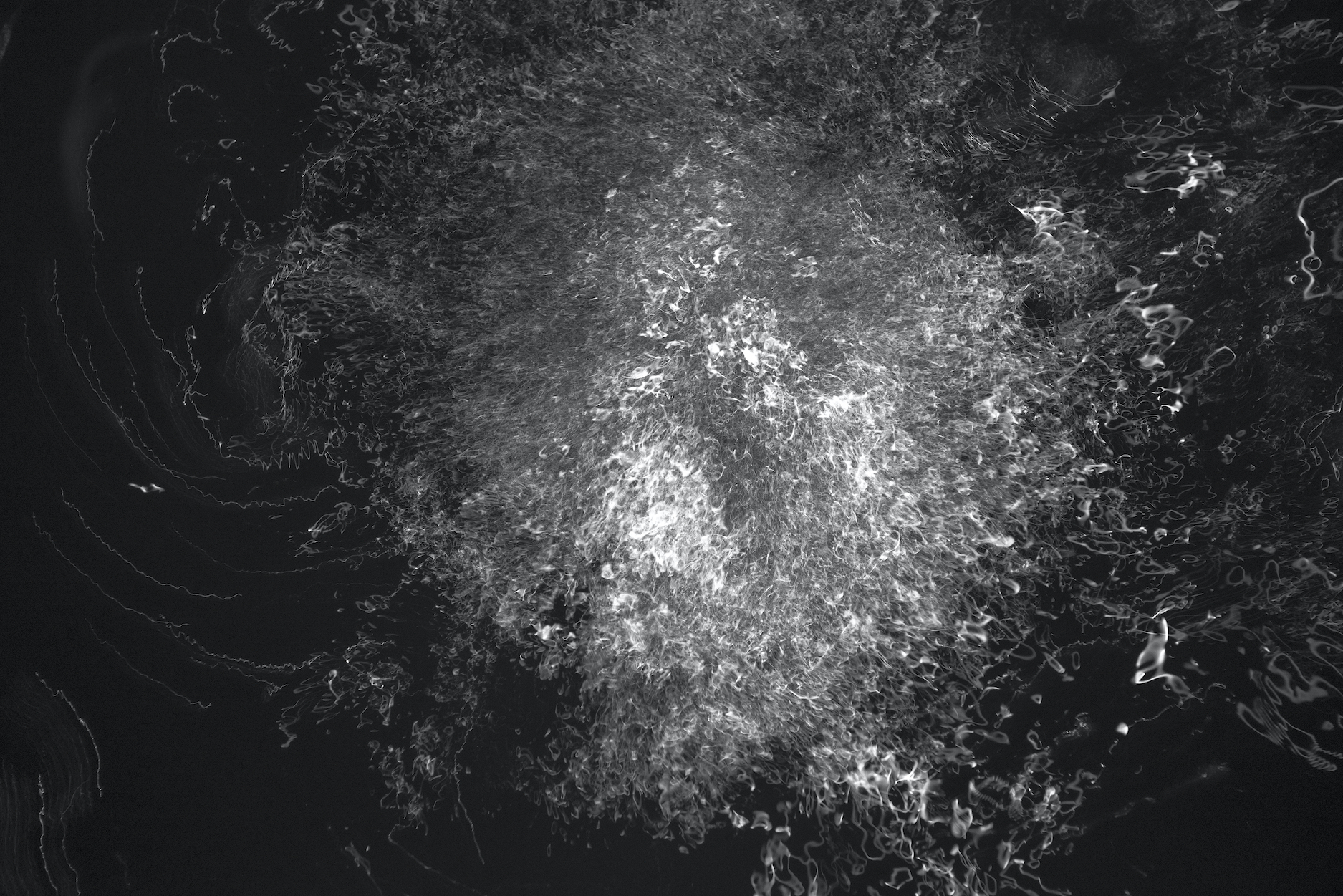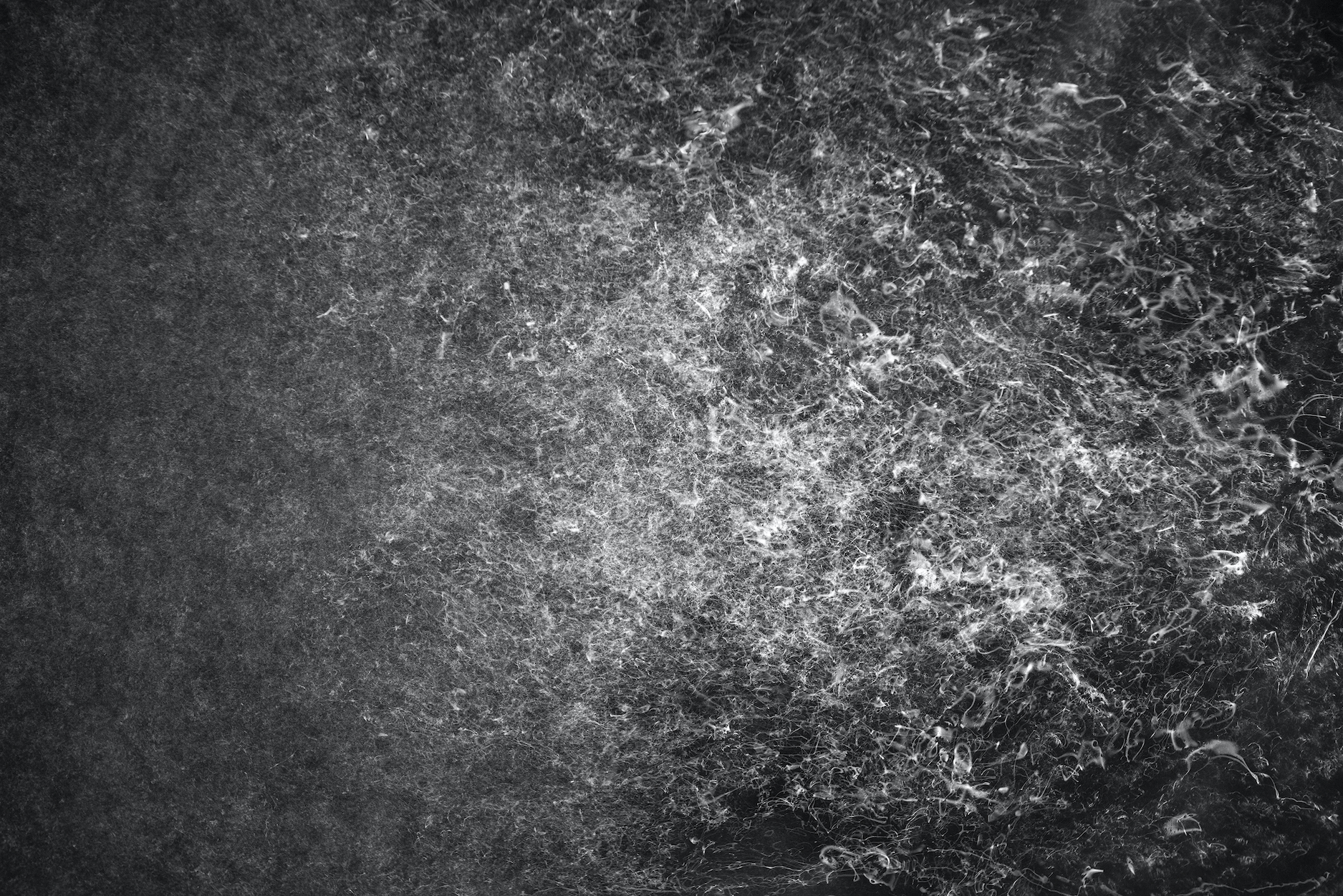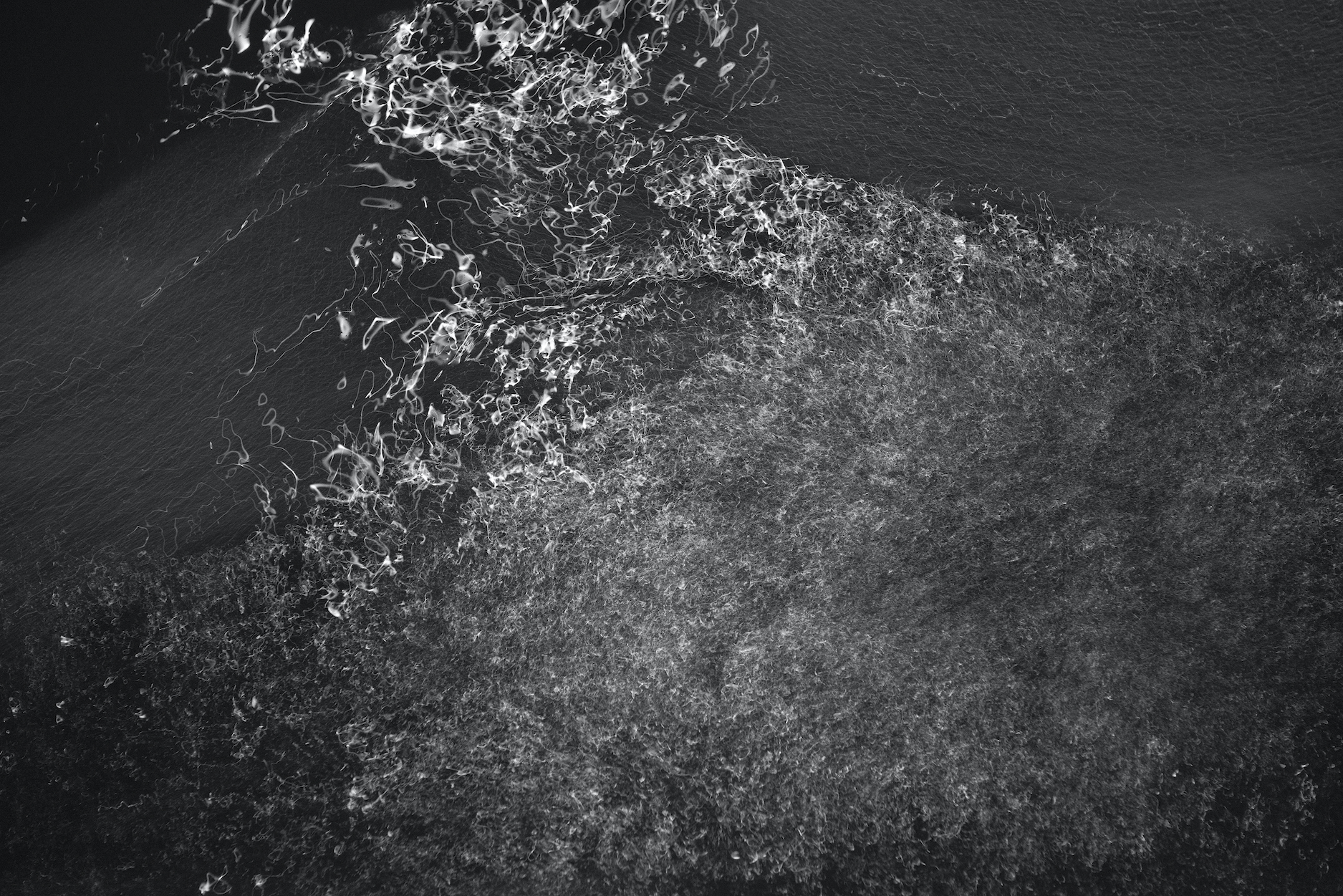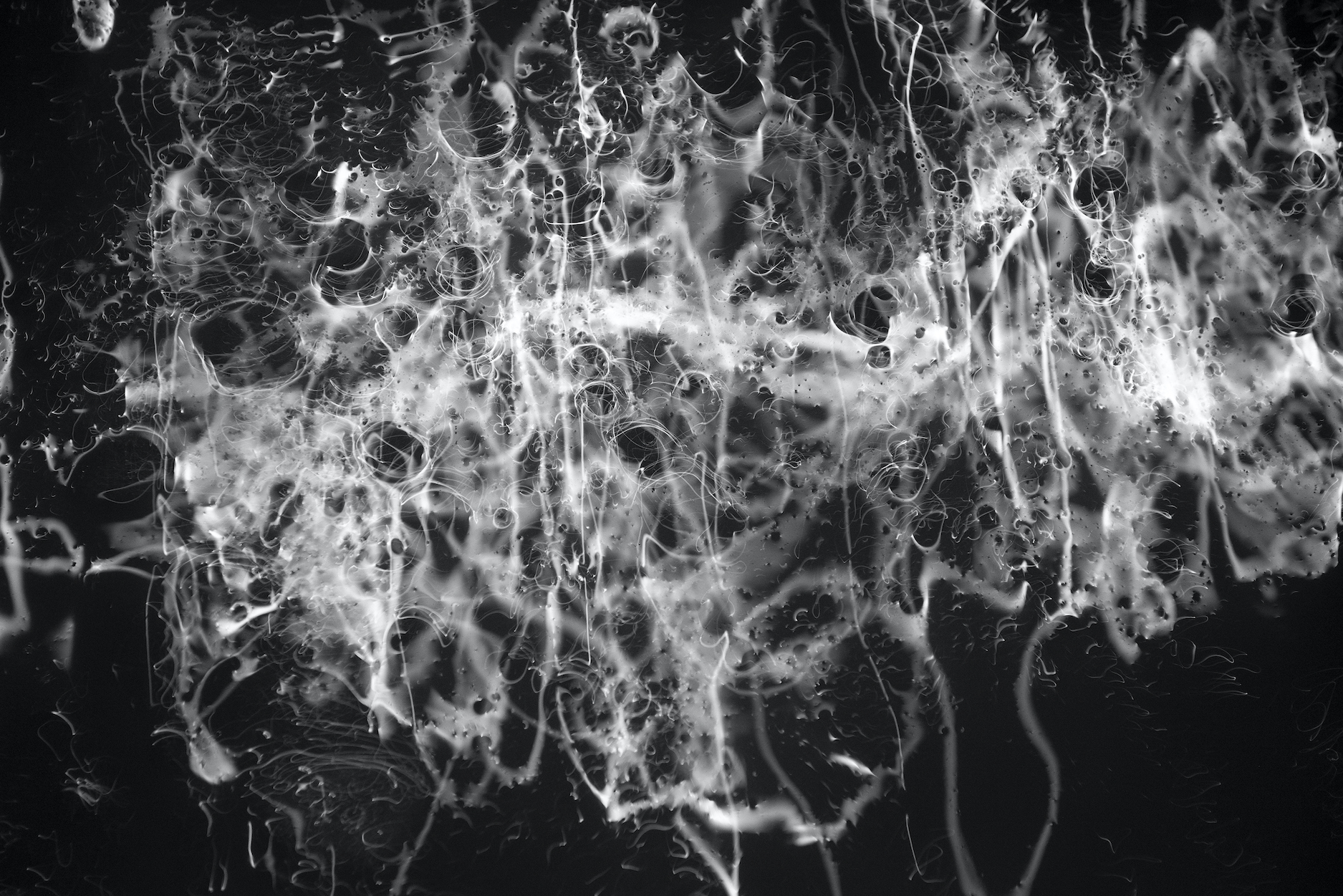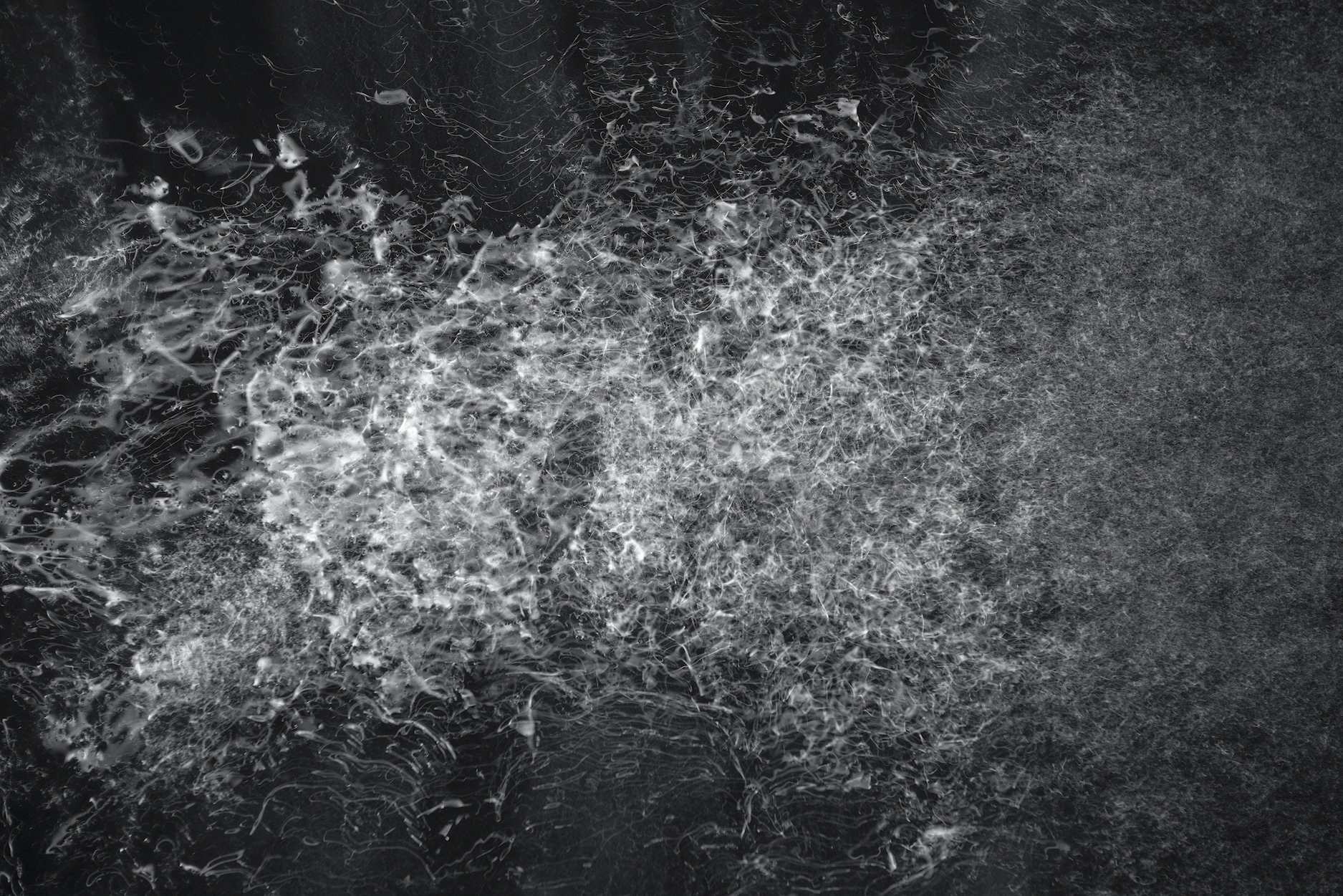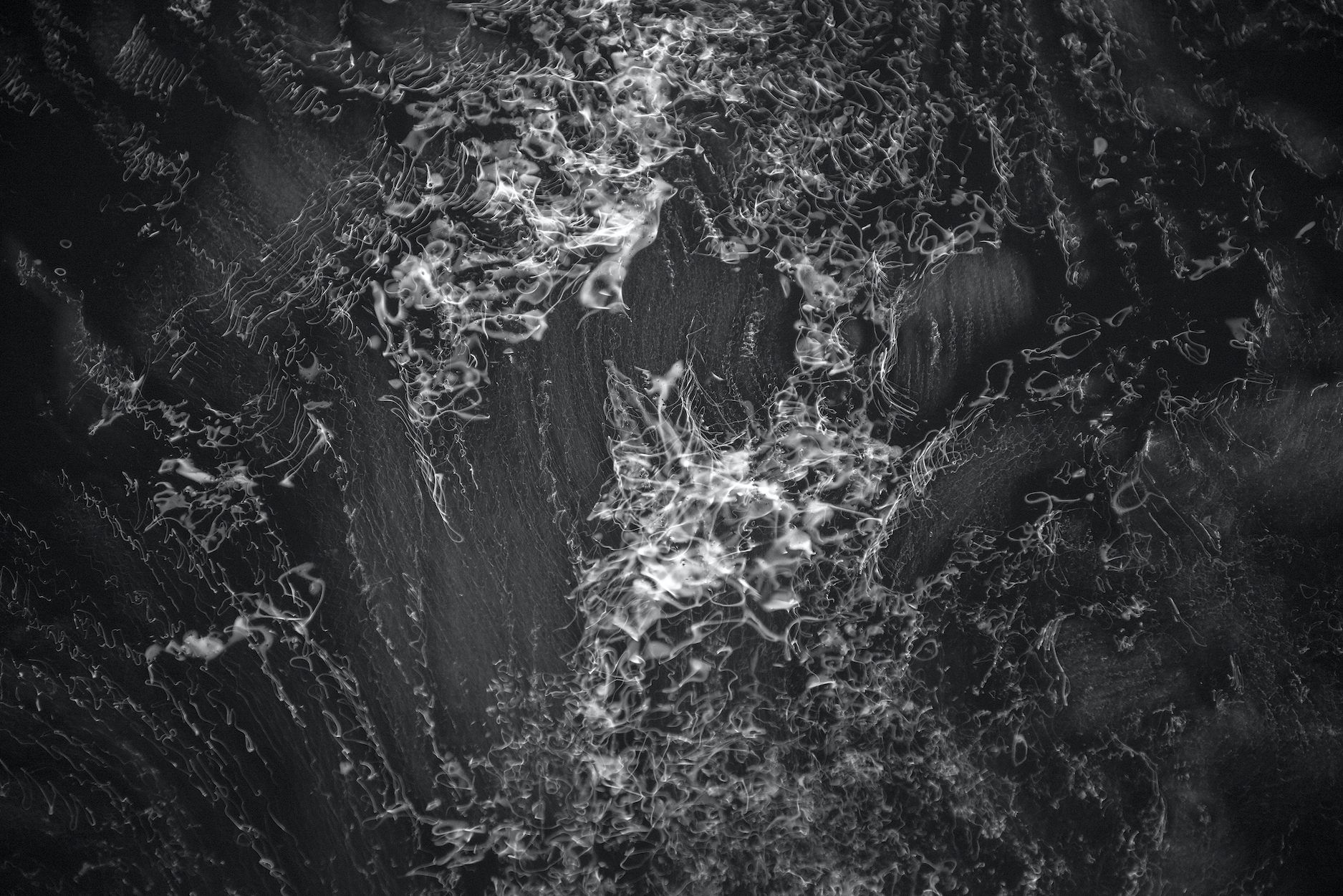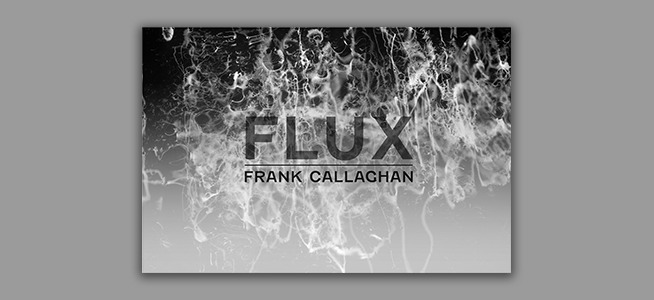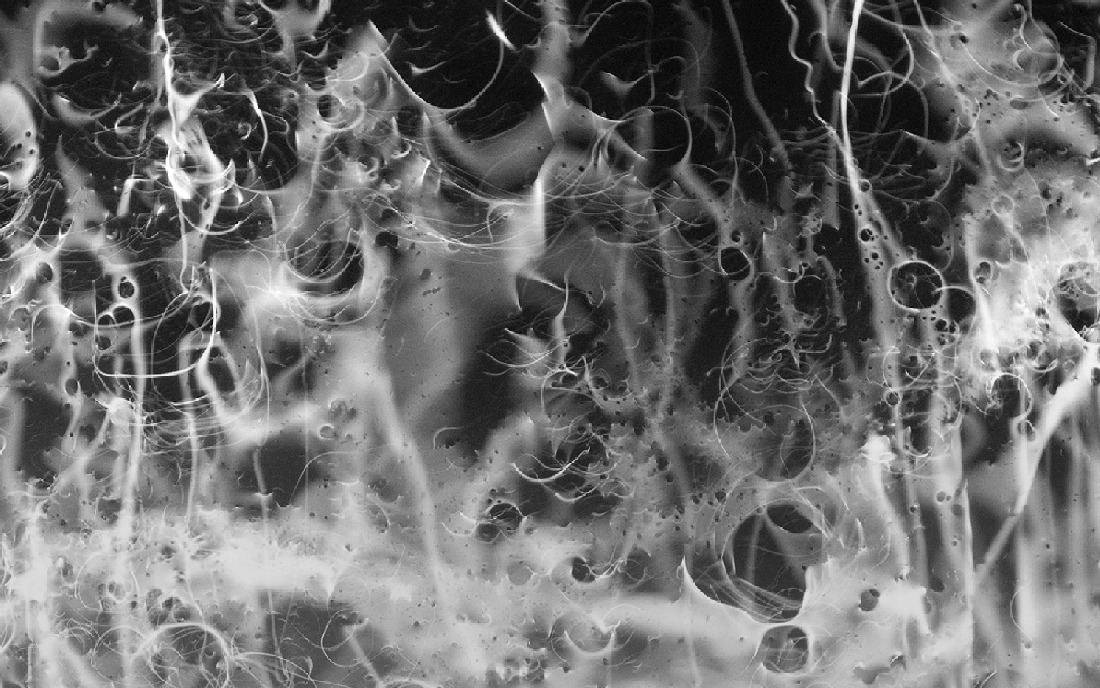
Flux
Frank Callaghan
Silverlens, Manila
About
For this exhibition, Frank Callaghan revisited a familiar element: water, which he has photographed previously for his last two series of works, Search/Light (2017) and First Light (2018). Known for his nighttime photographs with minimal post processing, he was drawn to the light streaming on the surface of the ocean, breaking the horizon. He took long exposures resulting in beams of light that subtly illuminate the waves, the night sky, and its surroundings before they recede back into the darkness.
Last year, he returned to the same spot and used the same process but something was different. Upon throwing a stone into the water, he realized what he needed to change. Unlike in his previous works wherein he described himself as a passive observer, for this new series, he had to intervene and purposefully create disorder. He then proceeded to use various objects – sticks, stones, drops of water, and eventually constructed a large makeshift apparatus using two planks to hit the water's surface. Standing in the middle of the water, under the moonlit sky, he recorded the effects of light on the surface as it was agitated. As this curious experiment yielded the expected visual disruption, it also produced a calming effect with the release of negative ions. Once inhaled, equilibrium is restored recalibrating the body electric.
As he repeated the process over many months, he methodically recorded mental images moving in constant flux. In this exhibition, he presents a careful selection of ten large prints distilled from thousands of digital images inviting the viewer to enter his liminal space. A world captured by the camera’s long exposure - it brings forth patterns of polarized light where the mysteries of science from the Earth’s primordial soup to the grey matter of neuroscience unravel and collide. Reminiscent of prints from medical imaging - nature's rich abstraction also begins to surface in elegant black and white tonalities.
For Callaghan, shooting in the dark is both an intuitive and a theoretical process. When one cannot see what’s around, but know that it is there, one simply has to trust one’s knowledge on how to represent or visualize it. By opening the camera for an extended period, he not only captures or draws in light; he also records the passage of time. Through this act, he is able to meld time, space, thought, and feeling into a single surface or image.
As a treatise on the nature of disruption, his new series reflects the current disarray caused by the global pandemic. The long exposures also function as a metaphor for how everything had to slow down, if not forced to a complete standstill. Locked down in an island, waiting for the full moon in order to shoot his work, his attention turned to the changes of the seasons and the rhythm of the tides. As much as his focus was on the chaos on the surface of the water, he also found comfort in knowing that the laws of nature will return stillness to the water after every disturbance.
Words by Katya Guerrero and Ringo Bunoan
Frank Callaghan (b. 1980, England) is a Manila-based artist working with photography. His work has been exhibited in Manila, Singapore, Japan, Hong Kong, France, Denmark, and the Unites States. He received the Ateneo Art Award in 2015 for Dead Ends, and was shortlisted for the same award in 2010 for Dwelling and in 2011 for River of Our Dreams. He holds a degree in Economics from the Wharton School of Business of the University of Pennsylvania.
Callaghan works almost exclusively at night, using long exposures to shoot in near darkness. He approaches photography as a language, and is interested in its ability to express ideas that words cannot. His practice explores the nature of photography and its mechanisms, like exposure and compression. For Callaghan, “A photograph is an exposure of a light sensitive material to light, that com- presses form, line, colour and shadow to a flat surface. At the same time it can capture and compress energies of other kinds – energies of the artistic process, decisions, traces of memories, emotions, experience, gestures.” Callaghan works in series.
Katya Guerrero is the founder of Luzviminda: Archive of Philippine Photography (www.luzviminda.ph), a platform to introduce Philippine photography to a wider audience. This is an offshoot of her ongoing work at Pioneer Studios (www.pioneerstudios.ph) where she manages the photography, digitization and fine art printing department. A daughter of a photographer-publisher she grew up in a rich environment that enabled her to intuitively understand the photographic processes from conception to print. Since the 1990s, she has consistently worked on creative initiatives to support and promote Philippine art and culture.
Video
Works
